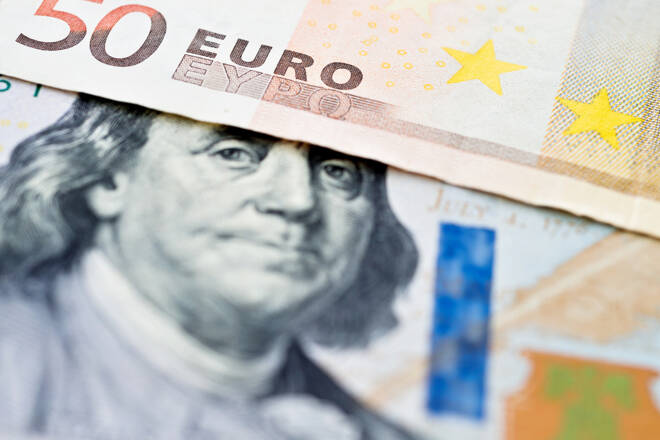Advertisement
Advertisement
EUR/USD and Sub-$1.055 in the Hands of the French Economy
By:
It is a busy day ahead for the EUR/USD, with the French economy in the spotlight. Q4 GDP and prelim inflation figures will be the focal points.
It is a busy day ahead for the EUR/USD. The French economy will be in the spotlight early in the European session, with GDP, prelim inflation, and consumer spending figures in focus.
While the GDP numbers will influence, we expect consumer spending and inflation figures to be the key drivers.
In the latest ECB Economic Bulletin, the ECB noted that rising wage growth and declining energy price inflation should ease the loss of purchasing power and support consumption. Consumer confidence would need to improve to support the ECB’s outlook on consumption.
After the latest US inflation numbers and shift in sentiment toward Fed monetary policy, investors need to monitor ECB member speeches. However, with no ECB Executive Board members on the calendar to speak today, investors should track ECB Executive Board member commentary with the media.
EUR/USD Price Action
At the time of writing, the EUR/USD was down 0.13% to $1.05956. A mixed start to the day saw the EUR/USD rise to an early high of $1.06150 before sliding to a low of $1.05858.
Technical Indicators
The EUR/USD needs to avoid the $1.0587 pivot to target the First Major Resistance Level (R1) at $1.0642. A move through the Monday high of $1.06199 would signal a bullish session. However, the EUR/USD would need the stats and the ECB chatter to support a breakout session.
In the case of an extended rally, the bulls will likely test the Second Major Resistance Level (R2) at $1.0674 and resistance at $1.07. The Third Major Resistance Level (R3) sits at $1.0761.
A fall through the pivot would bring the First Major Support Level (S1) at $1.0555 into play. However, barring a data-fueled sell-off, the EUR/USD pair should avoid sub-$1.05. The Second Major Support Level (S2) at $1.0500 should limit the downside. The Third Major Support Level (S3) sits at $1.0415.
Looking at the EMAs and the 4-hourly chart, the EMAs send a bearish signal. The EUR/USD sits below the 50-day EMA ($1.06286). The 50-day EMA slipped back from the 200-day EMA, with the 100-day EMA pulling back from the 200-day EMA, delivering bearish signals.
A move through the 50-day EMA ($1.06286) and R1 ($1.0642) would give the bulls a run at R2 ($1.0674) and the 100-day EMA ($1.06756). A move through the 50-day EMA would send a bullish signal. However, failure to move through the 50-day EMA ($1.06286) would leave the Major Support Levels in play.
The US Session
It is a day on the US economic calendar. Goods trade data for January will draw interest early in the session. However, barring a marked widening in the goods trade deficit, the numbers should have a muted impact on the dollar.
The US CB Consumer Confidence numbers for February will influence. A larger-than-expected rise in confidence would support the more aggressive Fed monetary policy outlook. Economists forecast the Index to increase from 107.1 to 108.5.
Other stats include house price data. However, the latest jump in US mortgage rates will mute investor sentiment towards a likely slowdown in house price growth in December.
Following the latest Core PCE Price Index numbers, investors should also monitor FOMC member chatter.
About the Author
Bob Masonauthor
With over 28 years of experience in the financial industry, Bob has worked with various global rating agencies and multinational banks. Currently he is covering currencies, commodities, alternative asset classes and global equities, focusing mostly on European and Asian markets.
Advertisement
